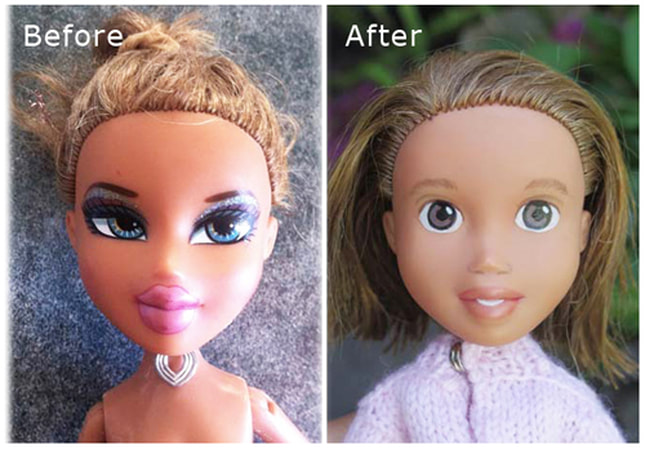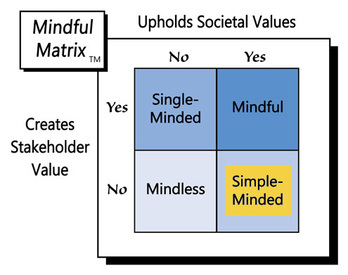Imagine a makeover where the stylist removes all make-up and chooses more conservative clothing. Now imagine that virtually everyone who sees the makeover loves it!
In an age in which glamor and glitz are good, how could such a traditional transformation possibly be popular? To understand, you need to check-out the makeover work of Sonia Singh, a 34 year-old Tasmanian scientist. Singh’s creative venture stems from a girlhood love. That’s because Singh doesn’t makeover people, but dolls.
As a child Singh always loved dolls. Now as an adult with an artistic eye, she sees potential in discarded dolls, many without hands or feet. Her love for dolls has led her to create a new type of toy, which she has named “Tree Change Dolls.”
Singh starts by taking old dolls, mostly the Bratz brand, and removes all the make-up from their faces, which reveals some amazing results.
Even after this first step in the “upcycling” process, the dolls have become wonderful sweet creatures that children say “look happier” and “look like someone [their] age.” Of course, this upcycling also makes good use of materials that would otherwise be wasted.
After the faces are redone, the next step is clothing. Here Singh’s mother comes to the rescue, custom hand knitting each new outfit!
It was never Singh’s intention to make a statement about Bratz dolls, which tend to have a highly made-up and sexualized look. She only intended to give them a new lease on life with a more down-to-earth persona.
That said, perhaps Singh is onto something that transcends the mere purpose of a plaything. As Christina Spears Brown states in Beyond Pink and Blue, “Toys are how kids learn about the world and their place in it. A toy doesn’t have to be labeled as educational to be instructive. Just because you aren’t aware of what your kids are learning doesn’t mean they aren’t learning” (January 14, 2013).
The name “Tree Change Dolls” may seem odd and out of sync with the current cultural trend toward catchy names. However, once one understands the meaning behind the name, it’s easy to see why Singh decided to keep it. She explains: “Tree Change is a term in Australia that means moving from the city to the country for a more relaxed and down to earth lifestyle. It is actually a derivation of the original term Seachange (also the name of a popular Australian TV show in the early 2000s) which meant moving from a bustling city life to a small seaside town for a more relaxed and down to earth lifestyle.”
What a contrast to the doll name “Bratz.” The Oxford dictionary describes a brat as “a child, typically a badly behaved one; spoiled child.” Similarly, Merriam Webster defines a brat as “an ill-mannered annoying child.” So, even the name suggests that MGA Entertainment, maker of Bratz, may be guilty of “Single-Minded Marketing.”
Tree Change Dolls, in contrast, seem to be the poster child for “Mindful Marketing”; however, at his point they only satisfy four of the five qualities required for mindfulness:
- Appropriate benefits relative to costs – check
- Clear and truthful communication – check
- Respect for people and their institutions – check
- A good steward for resources – double check
What Tree Change Dolls lack is the provision of products at convenient times and places. Being online gives the enterprise reach, but with a repertoire of only a dozen dolls, the venture lacks production capability, which constrains it for the time-being to “Simple-Minded Marketing”; however, it should be added, “with GREAT potential!” We’ll likely be seeing more of Tree Change Dolls.
Learn more about the Mindful Matrix and Mindful Meter.
Check out Mindful Marketing Ads and Vote your Mind!




 RSS Feed
RSS Feed